I first rode the first prototype RX4 in June 2015, which is really quite a ways back if you think about it. I was in Chongqing to discuss things we were doing on the RX3 and the new RC3 model, a sports bike based on the RX3 engine. The RC3 bike was stunning, but it suffered from a bad case of “me, too” (Honda, Kawasaki, and Yamaha all had credible 300cc sports bikes here in the US) and the RC3 just didn’t sell well when it reached our shores. The RX3 was going great guns, though, and there was a cry for a similar bike with more beans.
Enter the RX4.
That first one was wild. I remember standing out in the heat and humidity with the Zongshen folks snapping photos of the RC3 when a Zongshen engineer rode into our midst on what appeared to be a hacked-up RX3, smartly executing a stoppee that lofted the rear wheel 3 feet in the air, and coming to rest right in front of us. This guy can ride, I thought. In my younger days I had done stoppees like that, but not by design and they didn’t end the same way.
The bike was rough. It was an RX3, but somehow the Zongsters had shoehorned a prototype 450cc motor into the frame. The engine was made of castings and machinings, and it looked (and sounded) very rough. Telling me that they hadn’t worked out the mapping, my hosts asked if I wanted to ride the prototype. Is a bear Catholic? Does the Pope poop in the woods? Hell, yeah, I wanted to ride it. I couldn’t talk about the bike in the CSC blog at the time, and that was probably a good thing. It didn’t run well, and the handling was, well, let me put it this way: Imagine you’re drunk as a skunk and you’re wearing stiletto heels, and you’ve got to walk across a rocky stream bed through swiftly-flowing water. In my checkered past, I’ve done two of those three things, and I don’t need to try the stiletto heels thing to imagine what the combination would be like because I rode that first prototype RX4. It was that bad, and I told the Zong folks what I thought. They smiled politely. They knew.
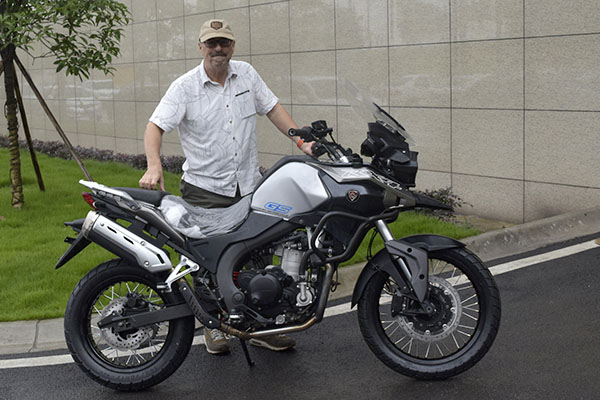
A year or two later I was in Chongqing again, and I rode an RX4 that was closer to what the production bike would be. It was a much more refined machine. Heavier than an RX3, most definitely. Faster? I really couldn’t tell. It was raining and I was on the Zongshen test track, which is a tightly wound affair with topes and no straights tucked away on the Chongqing manufacturing campus. It felt a lot better than that first prototype, but I really couldn’t let ‘er rip because there wasn’t enough room. I also saw a clay mockup of the RX3S (the 380cc twin) in the Zongshen R&D center, a bike I just couldn’t understand. Again, no photos allowed, but it made no matter to me because the RX3S was a solution to a marketing problem that didn’t exist.
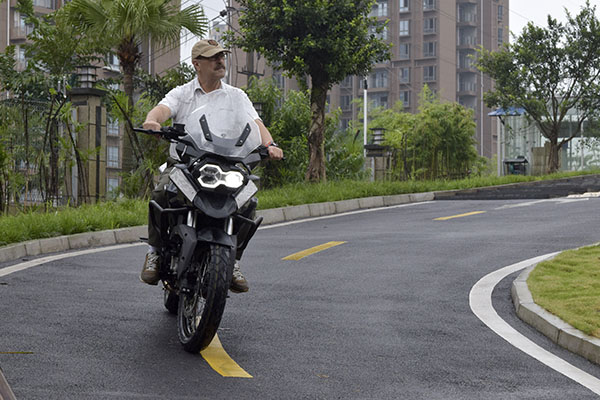
That brings us to today and the production configuration RX4 I am picking up later this afternoon. Or maybe tomorrow. It depends on when Joey has it ready. It’s going to be interesting. I’m flattered that CSC wants my take on the bike, and that they want me to write about it with no preconditions on what I can and cannot say.
Like I always say, folks: Stay tuned.

 The reason lefty bits are the nads for removing stuck or broken bolts is because of their natural tendency to unscrew whatever they are drilling into. By increasing the bit size in stages hopefully you can get the offending screw so thin that the remaining threads weaken, collapse slightly and wind out of the hole looking like a coil spring. And that’s mostly what happened except the thread came out in pieces.
The reason lefty bits are the nads for removing stuck or broken bolts is because of their natural tendency to unscrew whatever they are drilling into. By increasing the bit size in stages hopefully you can get the offending screw so thin that the remaining threads weaken, collapse slightly and wind out of the hole looking like a coil spring. And that’s mostly what happened except the thread came out in pieces. After clearing out the swarf I ran a bottoming tap into the hole and tidied up the threads as much as possible. I will use a slightly longer screw to compensate for the compromised hole but I’m pretty sure it will be fine and I have avoided using a Helicoil thread repair, which is the hack mechanic’s favorite crutch.
After clearing out the swarf I ran a bottoming tap into the hole and tidied up the threads as much as possible. I will use a slightly longer screw to compensate for the compromised hole but I’m pretty sure it will be fine and I have avoided using a Helicoil thread repair, which is the hack mechanic’s favorite crutch.
 I haven’t forgotten about the carburetors either. I’ve been soaking them in Evapor-rust and the stuff is doing a fine job. It’s very mild so you can leave zinc carb bodies immersed for days without fear of eating away the good parts. All four of the carbs are clean and I’m waiting on a few parts before I can reassemble the rack.
I haven’t forgotten about the carburetors either. I’ve been soaking them in Evapor-rust and the stuff is doing a fine job. It’s very mild so you can leave zinc carb bodies immersed for days without fear of eating away the good parts. All four of the carbs are clean and I’m waiting on a few parts before I can reassemble the rack. Zed’s little clutch-cover, oil level window was black with sitting-bike mung. It was so black the oil level could not be determined. I removed the cover and cleaned out behind the metal back-plate. Since I had the cover off I figured it would be a good idea to check the clutch plates for wear. The fibers are within tolerance and the steels are only slightly rusty so I’ll clean all those parts up and Zed should have a functioning clutch.
Zed’s little clutch-cover, oil level window was black with sitting-bike mung. It was so black the oil level could not be determined. I removed the cover and cleaned out behind the metal back-plate. Since I had the cover off I figured it would be a good idea to check the clutch plates for wear. The fibers are within tolerance and the steels are only slightly rusty so I’ll clean all those parts up and Zed should have a functioning clutch. When Kawasaki designed the Z1 they went all out. This was Big K’s flagship motorcycle and the robust clutch is a fine example of strength. The large, straight-cut clutch gear would not look out of place in a one-ton manual truck transmission. The fingers that locate the fiber plates are surrounded by a steel band to prevent them from spreading under load. This clutch is awe-inspiring and looks like it could handle double the Z1’s 82 (claimed) horsepower. The bike has 41,000 miles showing on the clock and the metal parts show minimal wear. I am impressed.
When Kawasaki designed the Z1 they went all out. This was Big K’s flagship motorcycle and the robust clutch is a fine example of strength. The large, straight-cut clutch gear would not look out of place in a one-ton manual truck transmission. The fingers that locate the fiber plates are surrounded by a steel band to prevent them from spreading under load. This clutch is awe-inspiring and looks like it could handle double the Z1’s 82 (claimed) horsepower. The bike has 41,000 miles showing on the clock and the metal parts show minimal wear. I am impressed. Don’t take my word for it, here is the author of the Z1 repair manual waxing eloquent over the Z’s clutch.
Don’t take my word for it, here is the author of the Z1 repair manual waxing eloquent over the Z’s clutch. I’m making another list of parts and will be blowing more money on Zed. I really hope this engine runs without a lot of knocking and the transmission shifts like butter.
I’m making another list of parts and will be blowing more money on Zed. I really hope this engine runs without a lot of knocking and the transmission shifts like butter.
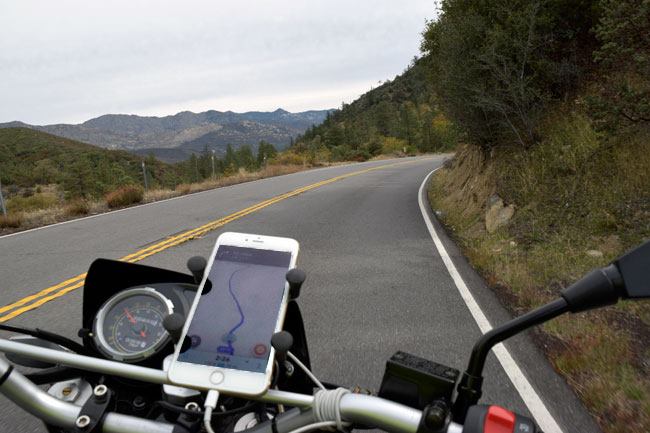




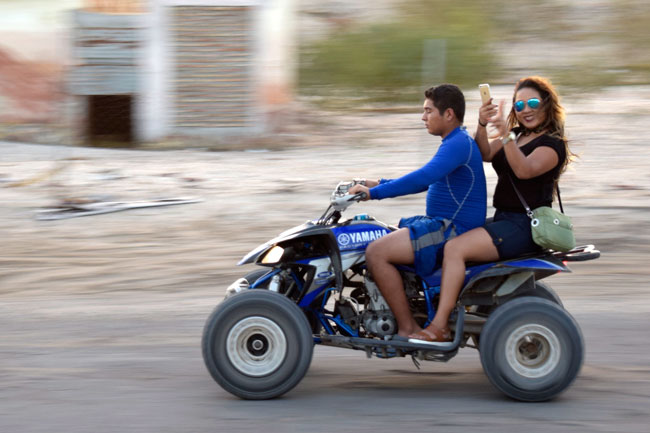

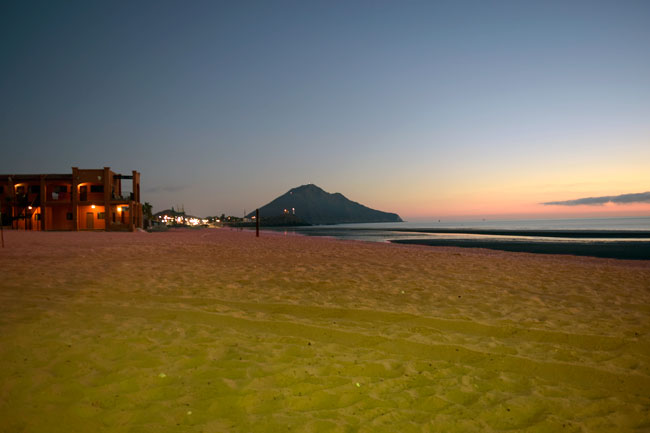
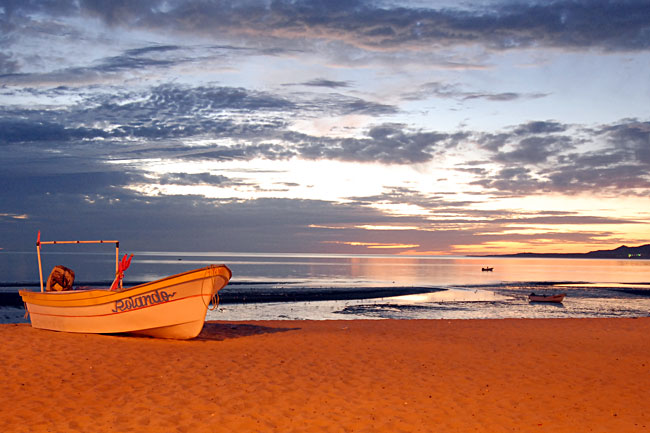
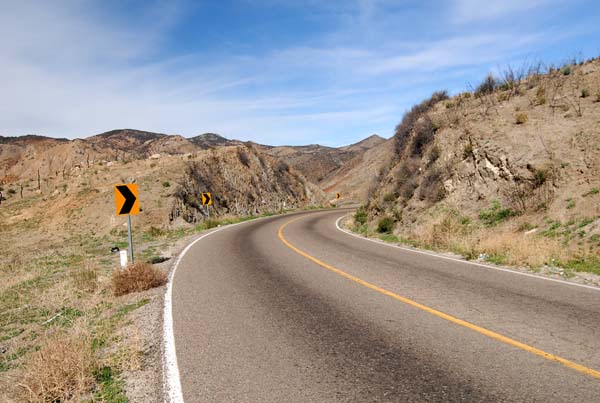











 Jack Lewis and I used to work for the same motorcycle magazine. We both started at the magazine about the same time. Our moto-journo fortunes seemed linked for 10 years and we both faded from the magazine’s pages nearly in lock step. One month on, one month off: Being platooned with Jack Lewis was like batting cleanup behind Babe Ruth. The crowd would be atwitter over the mammoth home run Jack smashed out into the parking lot, where the cigarette smoking kids would fight each other for the ball. Then it was my turn. No pressure.
Jack Lewis and I used to work for the same motorcycle magazine. We both started at the magazine about the same time. Our moto-journo fortunes seemed linked for 10 years and we both faded from the magazine’s pages nearly in lock step. One month on, one month off: Being platooned with Jack Lewis was like batting cleanup behind Babe Ruth. The crowd would be atwitter over the mammoth home run Jack smashed out into the parking lot, where the cigarette smoking kids would fight each other for the ball. Then it was my turn. No pressure.
 The lead photo above is one of the best bikes I’ve ever owned, my old 1995 Triumph Daytona 1200. It was an awesome ride. That bug-spattered headlight shot? It was the result of a sustained 120 mph run across central California on Highway 58…a ride I was on with my good buddy Marty. Good times on a dream bike…something we call can relate to.
The lead photo above is one of the best bikes I’ve ever owned, my old 1995 Triumph Daytona 1200. It was an awesome ride. That bug-spattered headlight shot? It was the result of a sustained 120 mph run across central California on Highway 58…a ride I was on with my good buddy Marty. Good times on a dream bike…something we call can relate to. I drilled the screw in stages until I could try my handy-dandy left-hand drill/remover tool.
I drilled the screw in stages until I could try my handy-dandy left-hand drill/remover tool.
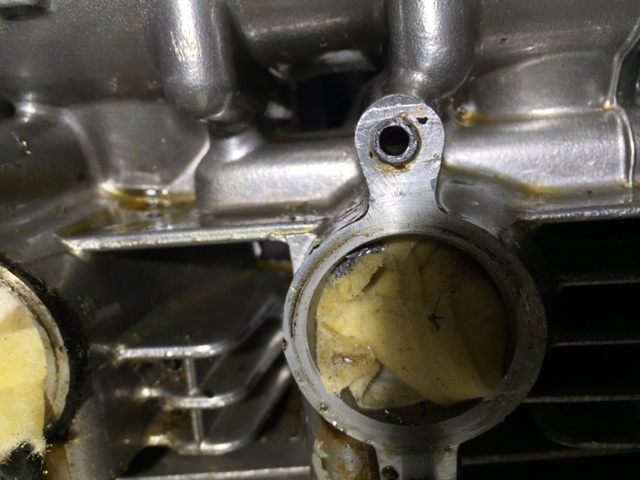 The broken screw is small, like a 4mm, maybe a 6mm and there’s not a lot of room for error. The little extractor tool had a good bite into the screw but the thing would not budge. One thing you don’t want to do is break off an easy out because they are super hard material. There’s no drilling the things and you are well and truly screwed if you manage to get the hole full of busted tool steel. I eased off. Sometimes you make more progress doing nothing rather than doing the wrong thing.
The broken screw is small, like a 4mm, maybe a 6mm and there’s not a lot of room for error. The little extractor tool had a good bite into the screw but the thing would not budge. One thing you don’t want to do is break off an easy out because they are super hard material. There’s no drilling the things and you are well and truly screwed if you manage to get the hole full of busted tool steel. I eased off. Sometimes you make more progress doing nothing rather than doing the wrong thing.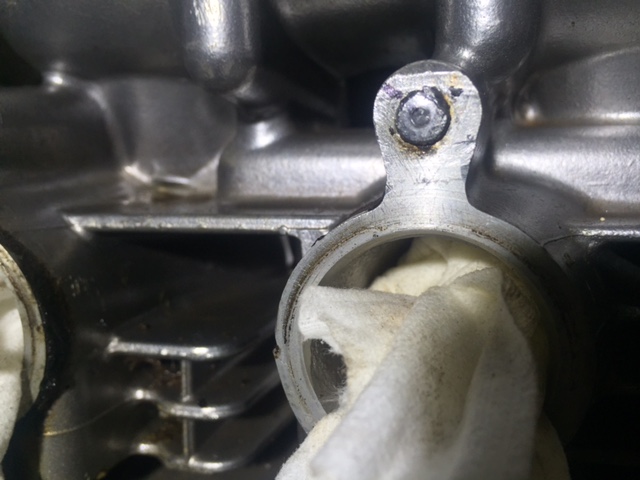 Admitting defeat today I decided to step away from the cylinder head and give the hole a few more days soaking with penetrating oil now that I can get to the backside of the situation. In addition to soaking I’ll heat-cycle the aluminum with a 1500-watt heat gun in the hopes of disrupting the steel screw/aluminum head interface. I guess the worse case would be to drill the thing all the way out and use a thread repair insert but I really don’t want to do that. That would be true hackery.
Admitting defeat today I decided to step away from the cylinder head and give the hole a few more days soaking with penetrating oil now that I can get to the backside of the situation. In addition to soaking I’ll heat-cycle the aluminum with a 1500-watt heat gun in the hopes of disrupting the steel screw/aluminum head interface. I guess the worse case would be to drill the thing all the way out and use a thread repair insert but I really don’t want to do that. That would be true hackery.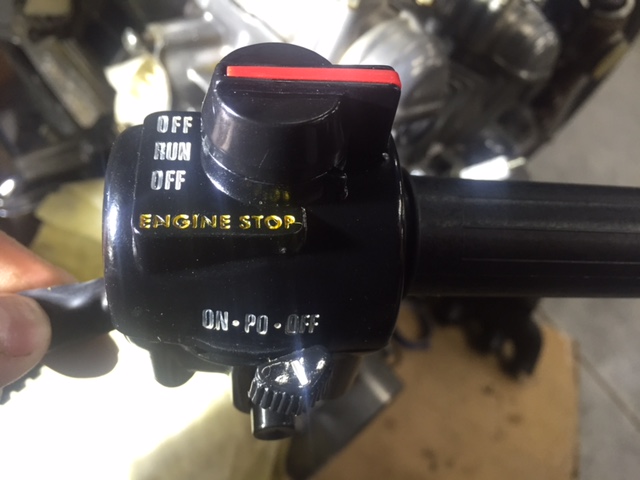 A complete
A complete  Included in the order was an O-ring for the re-sized drain plug and the washer that goes between the oil filter and the oil filter spring. With these parts I managed to get the bottom of the engine buttoned up. Progress has been fitful but Zed is getting closer. I’m really jonesing for concrete so I may have to pull off Zed and pour a yard to keep my soul on ice.
Included in the order was an O-ring for the re-sized drain plug and the washer that goes between the oil filter and the oil filter spring. With these parts I managed to get the bottom of the engine buttoned up. Progress has been fitful but Zed is getting closer. I’m really jonesing for concrete so I may have to pull off Zed and pour a yard to keep my soul on ice.